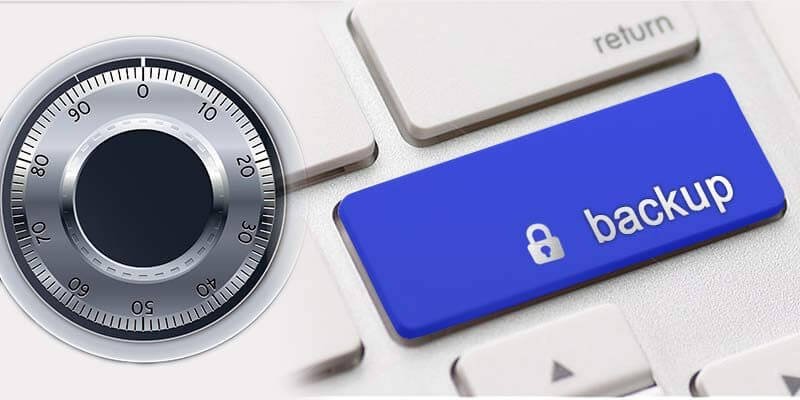In this age of data centers, cloud computing and internet of things (IoT) data is becoming increasingly more valuable. This is evident from the numerous online businesses focusing on providing data storage, data encryption, protection and hosting services. The cost of data loss from a data breach on average according to a study done by IBM is at $ 4 million. Of course this is happening in companies and large organizations. Personal data loss can also be costly and can lead to job loss. Knowing ways to prevent data loss is essential. Let’s look at a couple of data loss prevention best practices that you can apply on a daily basis for your personal files.
Online data backup
You can synchronize your computer with one of the online data backup services. If you have a fast internet connection your files can be backed up in real-time which means you always have a copy of your data on the cloud. If you are using the Microsoft operating system you can use the Microsoft one drive folder on your computer which will automatically synchronize to their servers.
Offline data backup
Alternatively, you can back up your data on an external drive. Manually doing backups on an external hard drive everyday can be tedious and time consuming. Fortunately, there are lots of options when it comes to backup software. Windows has its own built in back up function. To back up using windows.
Go to
- Control Panel
- System and Maintenance
- Backup and Restore.PC and Data Protection Software
Viruses can also lead to data loss through corrupting data, causing system instability, or even simple overwriting your files. To protect your data, make sure you run an updated antivirus software. This will not only protect your data from virus and malware but also prevent hackers from snooping on your files. Check if your antivirus supports a firewall. If not, then make sure your operating system firewall is up and running and also enable User Account Control (UAC).
On Mac computers Time Machine gives you the same function, to back up your files and restore them whenever there is a problem. To backup using Time Machine
- Insert your external hard drive
- Open Time Machine
- Go to preferences on the Time Machine menu.
- Click Select Backup Disk.
- External hard drive, Time Capsule, or other storage solution from the list
- Then click Use Disk.
Alternatively go to
- System Preferences.
- Time Machine.
- Select Backup disk
Dell Backup and recovery software and other third party tools can achieve the same purpose. Bottom line have two or more copies of your data in different storage devices.
Encrypt storage device
Encrypt your storage devices like thumb drives or external hardware adds another layer of protection. This reduces the chance of data tampering as it would require a password or authentication of some sort to access the data.
Beware though not to shoot yourself in the foot by forgetting the password. You might not be able to get your data back if you forget the password or end up losing money hiring some to break the encryption.
Protect your hardware
Have a surge protector just in case your electricity decides to play games with you. Keep your computer and devices in a well ventilated dry place. Make sure your devices are placed where they won’t easily drop. Hard drives can just die from a little drop.
Conclusion
In short the best practices to prevent data loss are
- Backup your files frequently online or and offline
- Protect your computer with updated antivirus and firewall
- Get your tech room in optimum mode
Are you an I.T administrator let us know in the comments section how you protect data in your organization or company


Backup is one of the best practice to avoid data loss. If you are not a professional, then do not try to open your hard drive and recover your data. But, if you really want to retrieve your data, then you must try Stellar Phoenix Windows Data Recovery – Professional software. This tool has an easy to use GUI and helps in recovering the lost or deleted data and the drives.
Thanks for sharing the post with us.
Your article helped me a lot, is there any more related content? Thanks!
Your point of view caught my eye and was very interesting. Thanks. I have a question for you.
Thanks for sharing. I read many of your blog posts, cool, your blog is very good.
Can you be more specific about the content of your article? After reading it, I still have some doubts. Hope you can help me.
I don’t think the title of your article matches the content lol. Just kidding, mainly because I had some doubts after reading the article.
Can you be more specific about the content of your article? After reading it, I still have some doubts. Hope you can help me.
Your article helped me a lot, is there any more related content? Thanks!
Your point of view caught my eye and was very interesting. Thanks. I have a question for you.
Thanks for sharing. I read many of your blog posts, cool, your blog is very good.
Thanks for sharing. I read many of your blog posts, cool, your blog is very good.
Your point of view caught my eye and was very interesting. Thanks. I have a question for you.
Thank you for your sharing. I am worried that I lack creative ideas. It is your article that makes me full of hope. Thank you. But, I have a question, can you help me?